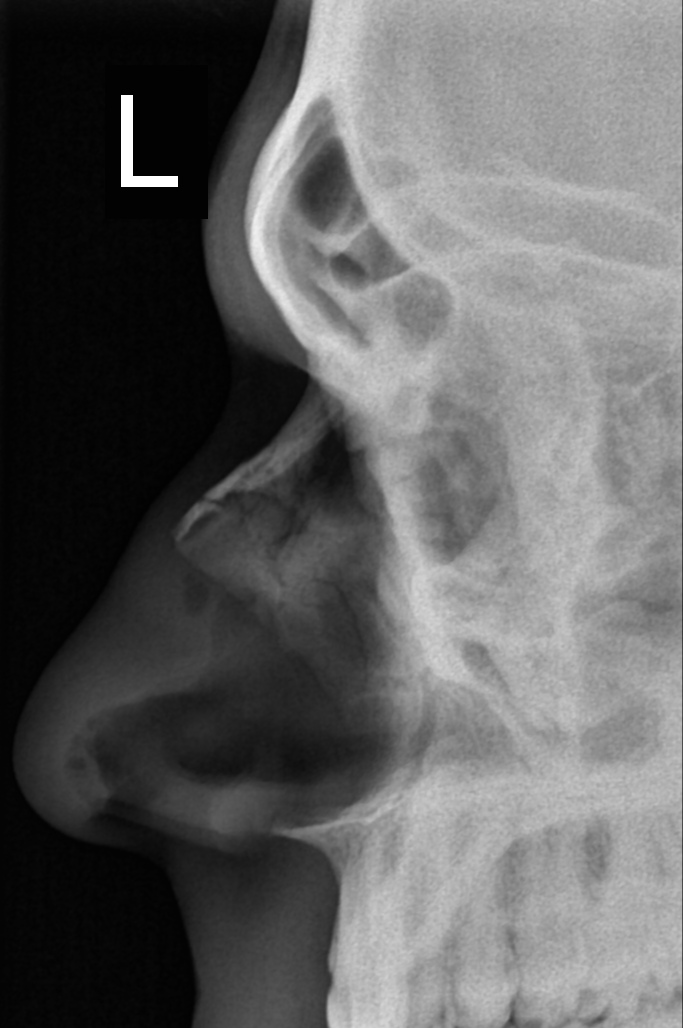nasal bone fracture




Nasal bone fractures are the most common type of facial fractures, accounting for ~45% of facial fractures, and are often missed when significant facial swelling is present.
Clinical presentation
Unsurprisingly, nasal bone fractures occur when the nose impacts against a solid object (e.g. fist, forehead, dashboard, etc.). Lateral impact injuries are the most common type of nasal injury leading to fracture.
Intimate partner violence should be considered in patients where the clinical details do not match the fracture, or the injury occurs in an intimate setting .
Pathology
Nasal bone fractures, when isolated, are most commonly a displaced fracture of one of the paired nasal bones. There is often associated with other facial fractures and this requires careful assessment :
- nasal septum
- orbital blow-out fracture
- frontal process of the maxilla
Nasal septal hematoma should also be actively assessed.
Radiographic features
It should be noted that cartilaginous injuries cannot be detected radiologically and that imaging of simple nasal bone fractures often adds little to patient management. However, imaging can be useful in the documentation, assessing the extent and associated facial fractures and/or complications .
Plain radiograph
- sensitivity ~80%
- best detected on the lateral view
- Waters view is useful in assessing the nasal arch
CT
- sensitivity is 100%
Treatment and prognosis
Treatment depends on the degree of displacement. If the alignment is essentially anatomical then no treatment is required. If the displacement is significant then if untreated they may result both in an unfavorable cosmetic result and in impaired function (i.e. difficulty in breathing through one or both nasal passages). Untreated nasal fractures account for a high percentage of rhinoplasty and septoplasty procedures.
The worst morbidity results from septal hematoma, leading to nasal septal perforation and necrosis, which causes severe nasal collapse and deformation.
Differential diagnosis
- longitudinally-oriented fractures may be confused for the nasomaxillary suture and/or nasociliary groove
Siehe auch:
und weiter:

 Assoziationen und Differentialdiagnosen zu Nasenbeinfraktur:
Assoziationen und Differentialdiagnosen zu Nasenbeinfraktur:

